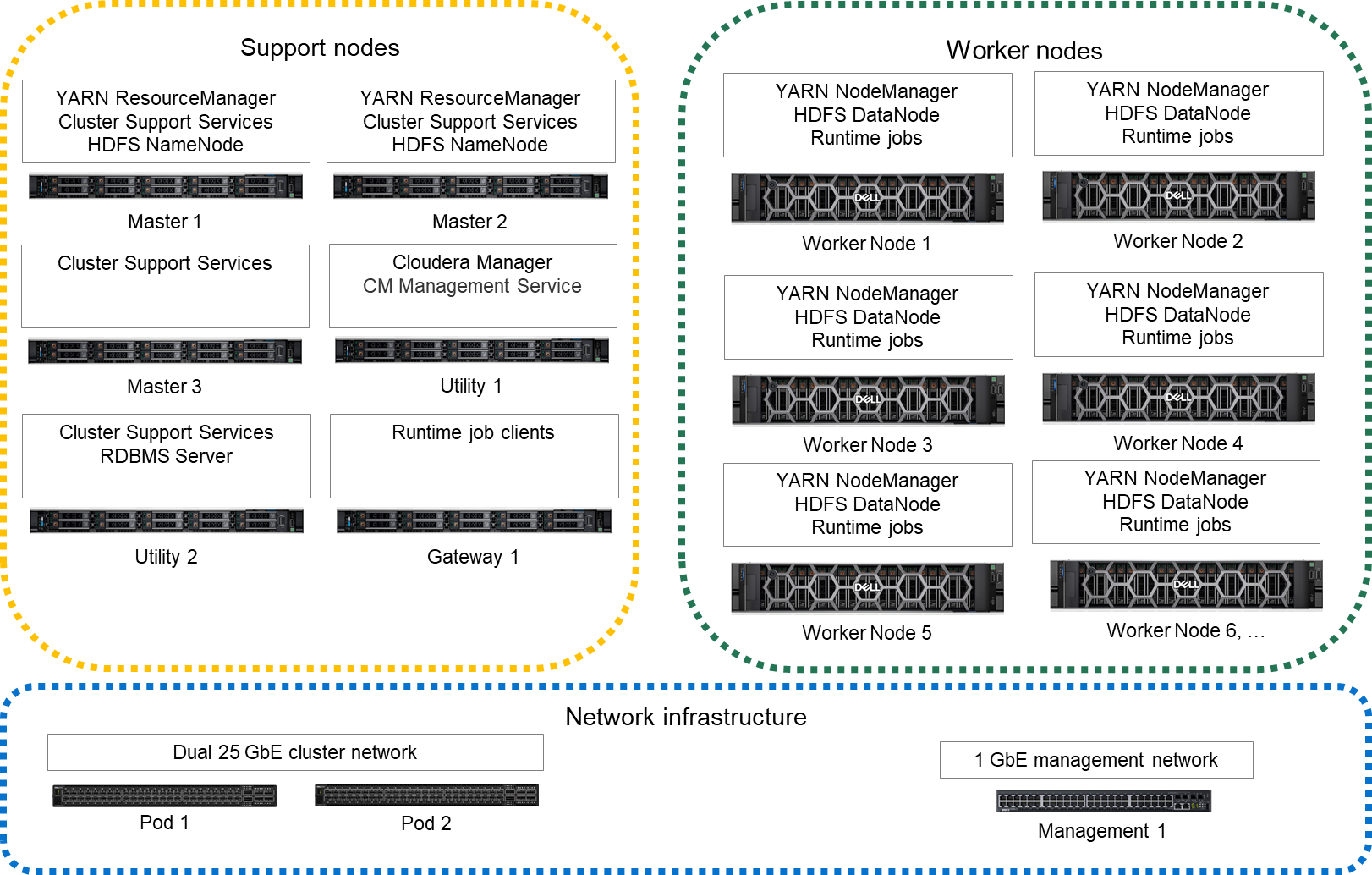CDP Private Cloud Base is deployed on a cluster of multiple physical server nodes. Each node has a particular configuration that is designed for its role in the cluster. These nodes are further specialized through the software services that are assigned to them.
There are two basic types of nodes: Infrastructure nodes and Worker nodes. Infrastructure nodes run on a common server configuration based on PowerEdge servers.
Infrastructure nodes include three specific node types: Master node, Utility node, and Gateway node. While these nodes use the same physical configuration, they take on different roles based on the software services deployed on each of them. There are three Master nodes, and together they run all the services that are required to manage the compute services and cluster storage. The Utility node runs Cloudera Manager and the Cloudera Management Services. The Gateway node contains the client-facing configurations and services.
The table below defines the various cluster nodes and their physical configuration.
| Node | Definition | Physical configuration |
| Master node | This node runs all the services that are required to manage the cluster storage and compute services. | Infrastructure node |
| Utility node | This node runs Cloudera Manager and the Cloudera Management Services. | Infrastructure node |
| Gateway node | This node contains all client-facing configurations and services, including gateway configurations. | Infrastructure node |
| Worker node | This node runs all the services that are required to store blocks of data on the local hard drives, and run processing tasks against that data. | General purpose Worker node |
| GPU accelerated Worker node | ||
| PowerScale Worker node |
The minimum supported configuration for CDP Private Cloud Base is eight cluster nodes, which include three Master nodes, one Utility node, one Gateway node, and three Worker nodes. Dell Technologies recommends a ten-node cluster with five Worker nodes as a starting point.
The node-level architecture diagram below shows the node types and assignments, and the primary software services, that are deployed on each node.

